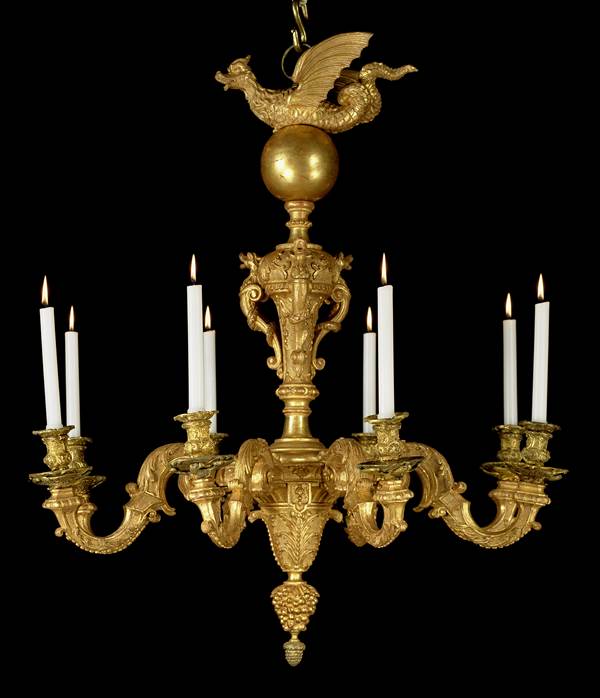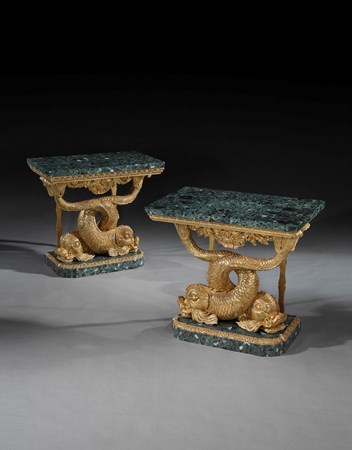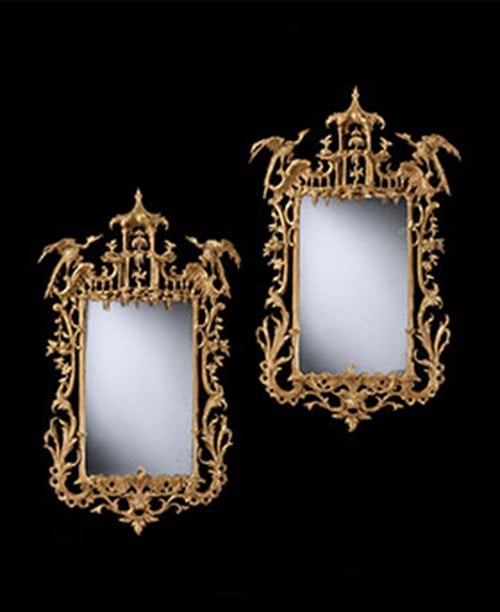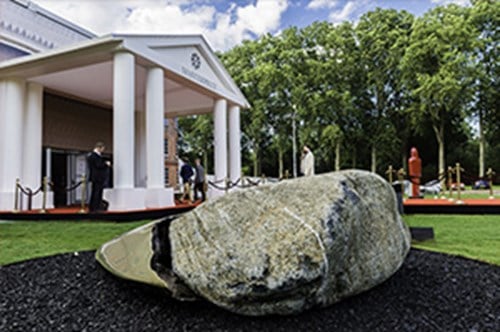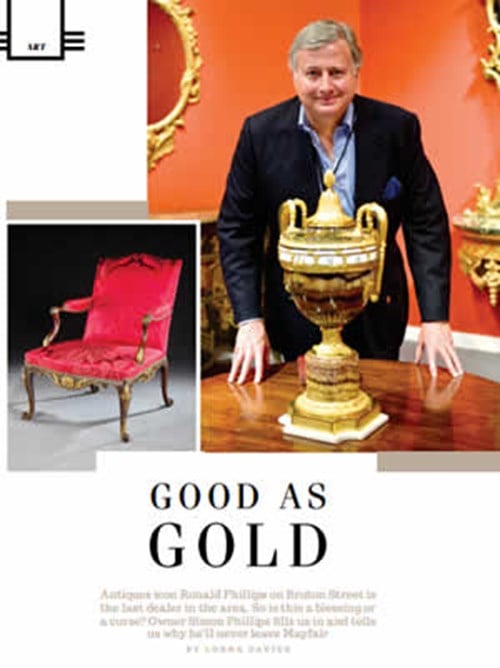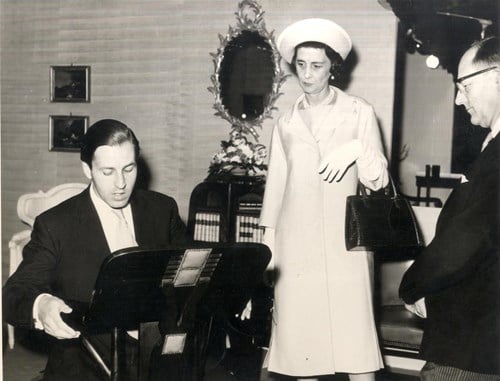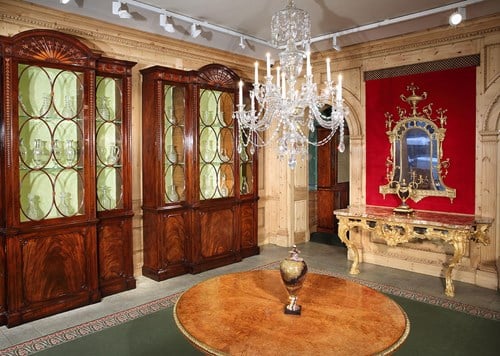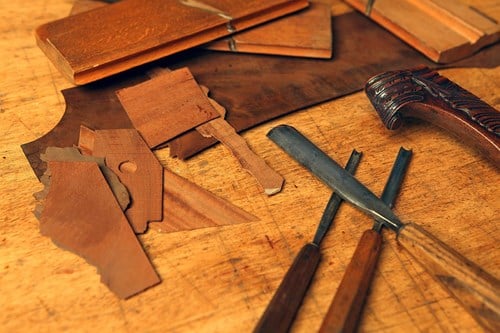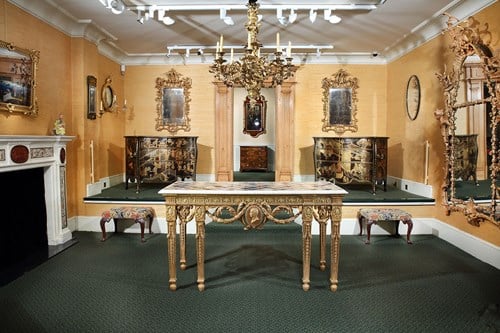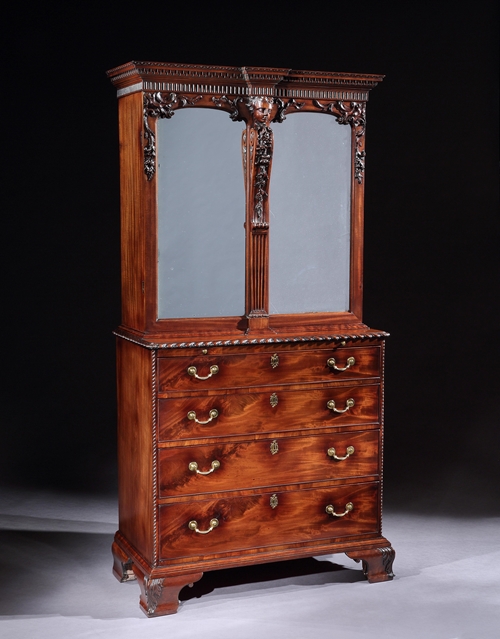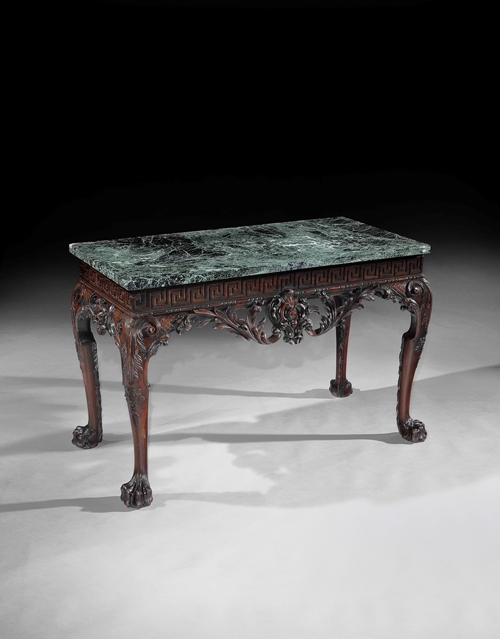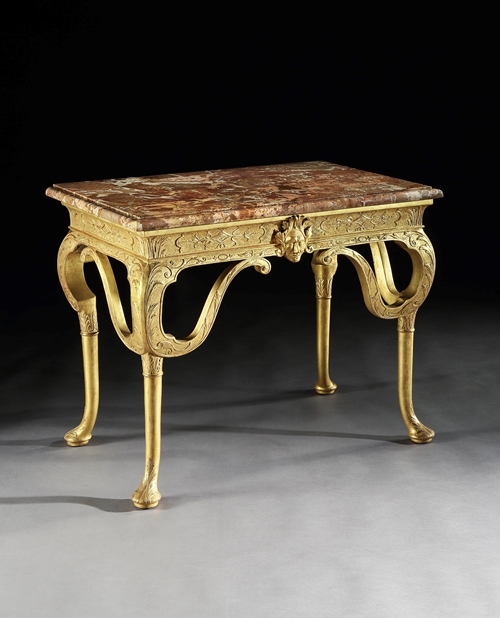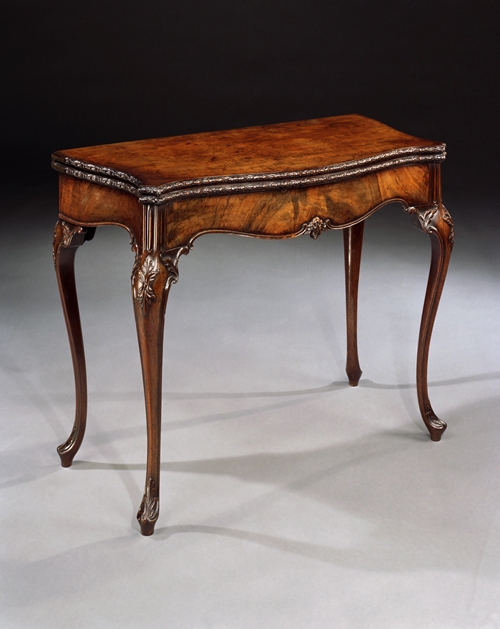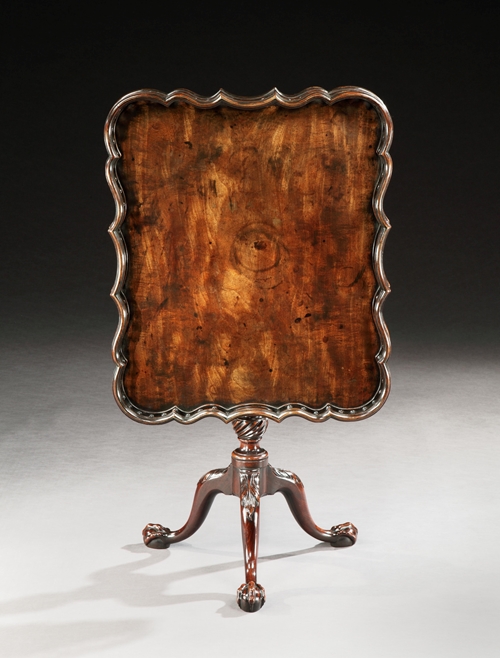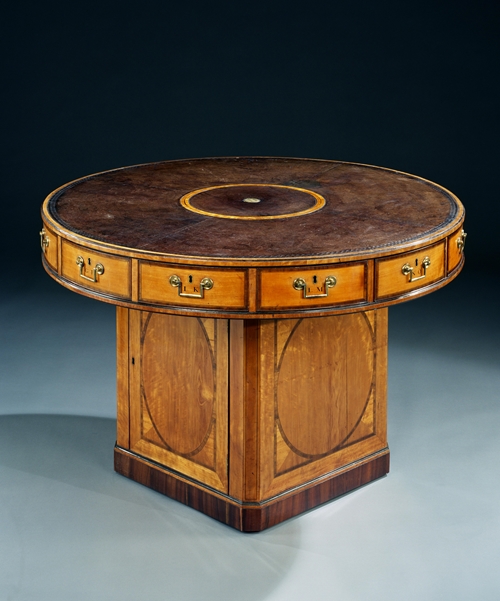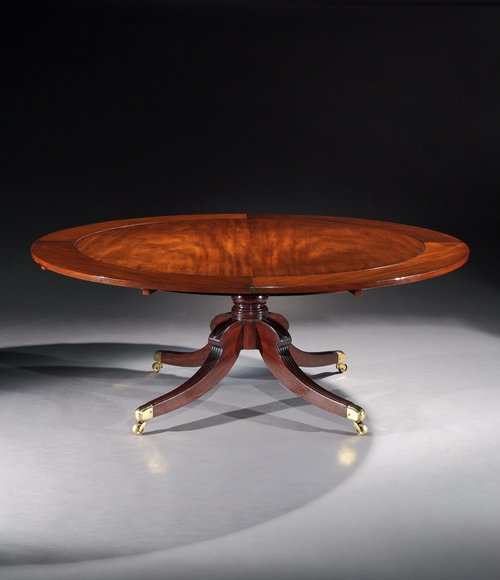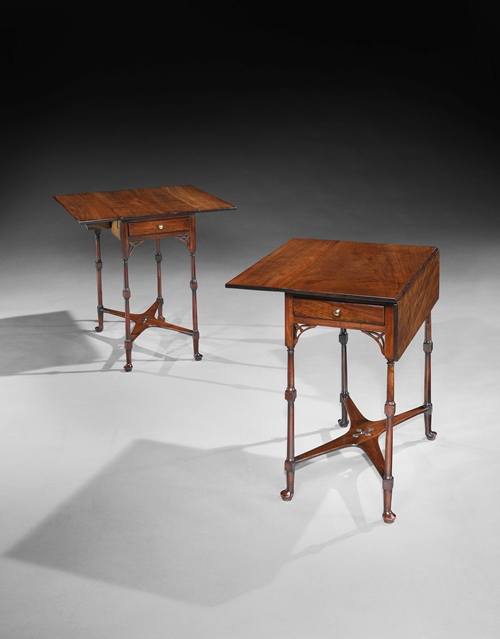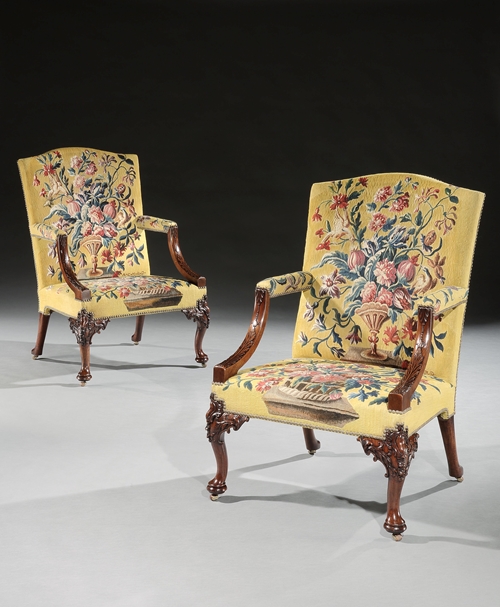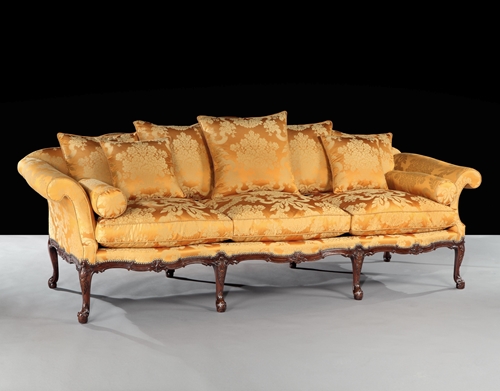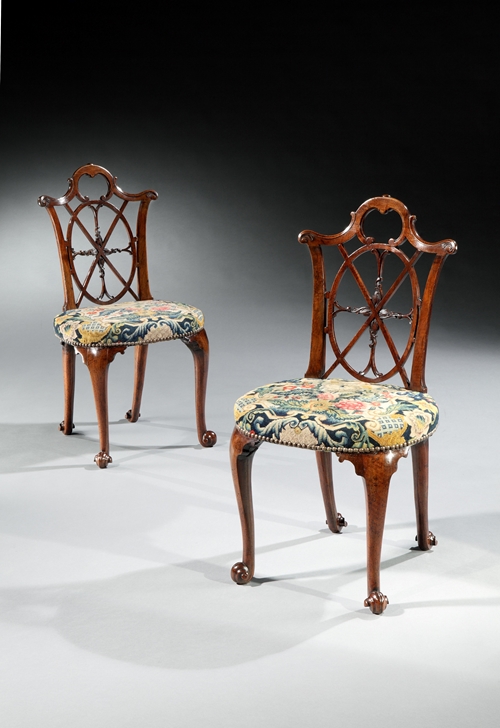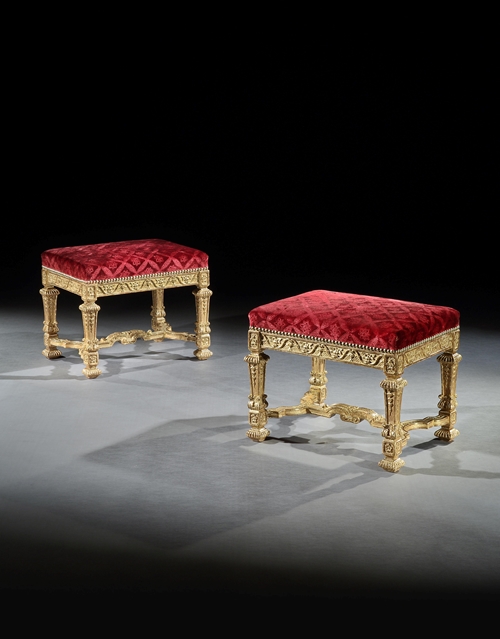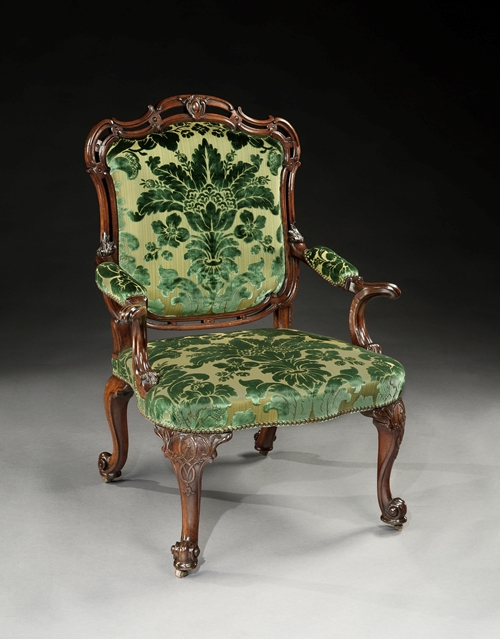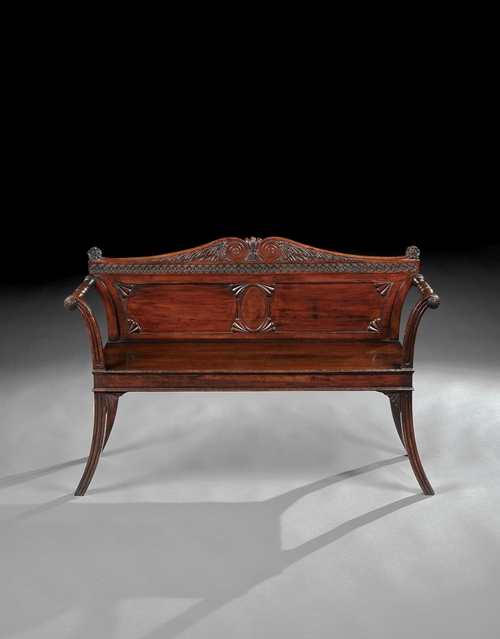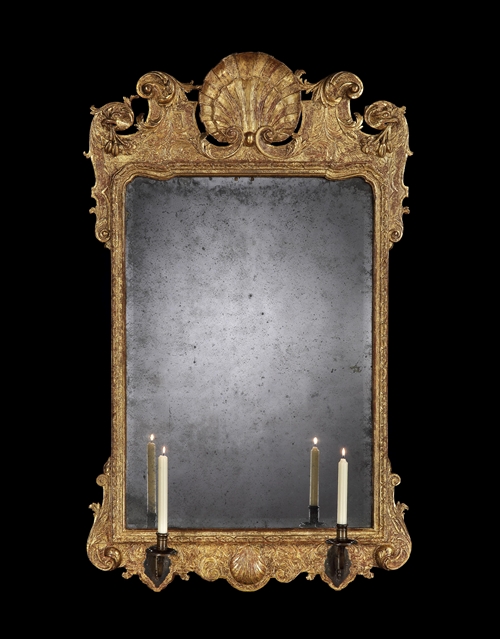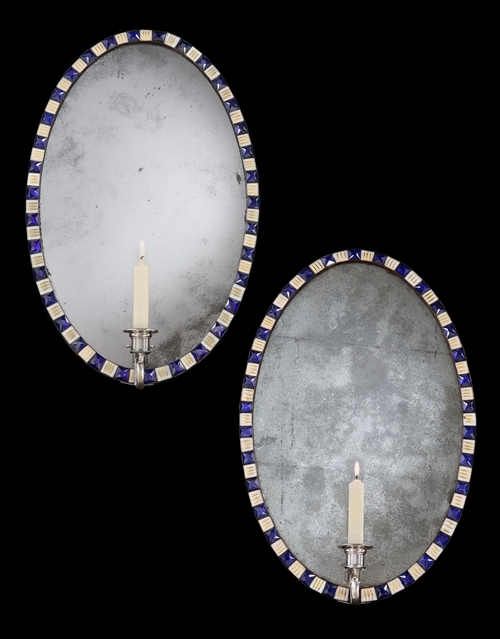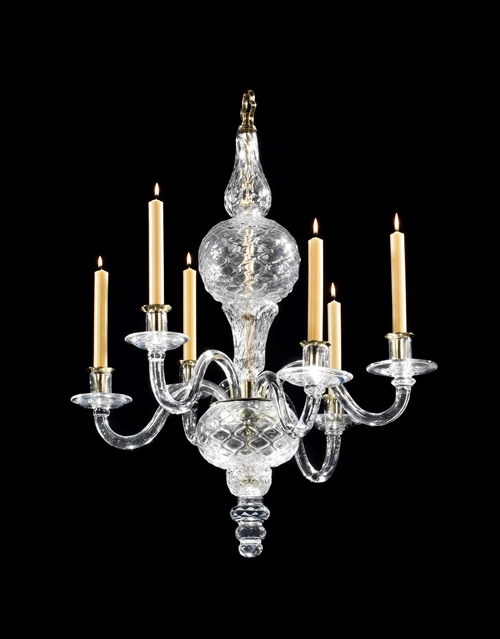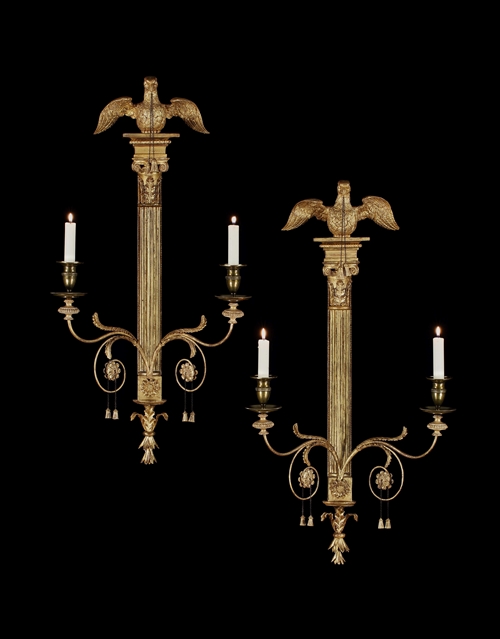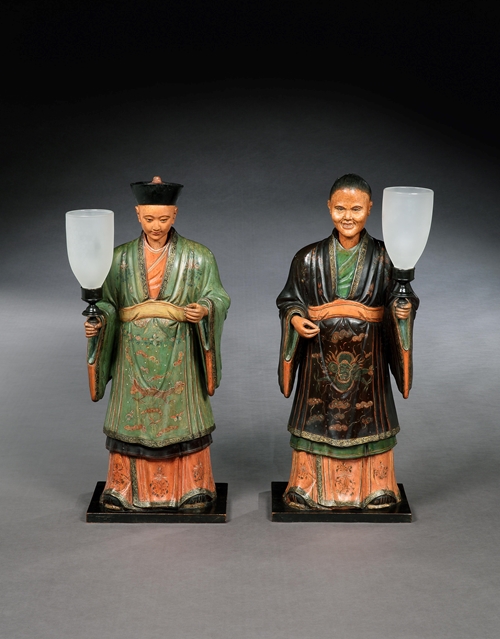An extremely rare and important early 18th century carved giltwood and gilt-metal eight-light chandelier, the multi-baluster stem surmounted by a wyvern with three scrolling wyvern volutes issuing scrolling foliate candle arms with gilt brass eagle-cast drip-pans and nozzles cast with lions, masks, and foliage with a berried foliate base.
This extraordinarily rare gilt gesso chandelier is designed in the 'antique' or French 'arabesque' style promoted by Louis XIV's cabinet-maker Andre-Charles Boulle (1642-1732)
Such chandelier patterns were popularised in England by King William III's architect Daniel Marot (d.1752). Drawings depicting related chandeliers with double-scrolled foliate arms, tassel details and fruited pendants appear in Marot's goldsmith's book Nouveau Livre d'Orfeverie, c.1700.
The number of surviving gilt gesso chandeliers dating to the first half of the 18th century is small. A similar pair executed in gilt gesso and clearly inspired by Marot's patterns were commissioned by George I for Kensington Palace and supplied by the Royal cabinet-makers James Moore (c. 1690-d. by 1743) and John Gumley (fl. C. 1691-1727). The pair, acquired as a sinecure by the Clive-Ponsonby-Fane family, was hung at Brympton d'Evercy, Somerset before being sold in 1956. One of the chandeliers is now in the collection of the Victoria and Albert Museum, London (Desmond Fitzgerald, Georgian Furniture, London, 1969, no.17). A further well-known pair, also attributed to Moore and Gumley were supplied for the State Apartments at Holme Lacy, Herefordshire, and now hangs in the Kirtlington Park dining room installed at the Metropolitan Museum of Art, New York.
Moore and Gumley, who were employed on Royal commissions from 1714, specialised in finely carved gilt-gesso work embellished with strapwork and scrolling foliage in a rich baroque vein. Aside from his Royal commission with Gumley, Moore was also independently employed by Sarah, Duchess of Marlborough, eventually supervising the building work at Blenheim Palace after Vanbrugh's dismissal in 1716.
This remarkable chandelier is surmounted by an imposing wyvern, a fantastical dragon-like beast, which may well represent a heraldic attribute. While many families used the wyvern in its crest, the ancient Herbert family were prominent patrons who may have employed this symbol when refurbishing their houses. The chandelier could have been supplied to the great patron and collector Thomas Herbert, 8th Earl of Pembroke (d.1733) for his London townhouse at St. James's Square. It is recorded that there was a sale of the contents of the London house after the 8th Earl's death however there is no surviving copy of the auction catalogue. St. James's House was demolished and records of its contents have not yet come to light. Thomas Herbert's son, the 9th Earl, Henry Lord Herbert (the 'architect' Earl) altered and refurnished the family seat at Wilton House in the 1730s, at which time he commissioned the superb giltwood furniture by William Kent. The hunting room at Wilton House features pilasters headed by the spread wings of the same heraldic wyvern (Oliver Hill and John Cornforth, English Country Houses: Caroline 1625-1685, Woodbridge, Suffolk, 1966, p.79, p.101).
-
Provenance
Redburn Antiques, London (Inv. #27A) until sold 1st April 1971.
Private collection, USA.
Looking for something similar? YOU MAY ALSO LIKE
YOU HAVE RECENTLY VIEWED ITEMS
- CAN WE HELP YOU?
- +44 (0)20 7493 2341
- [email protected]
